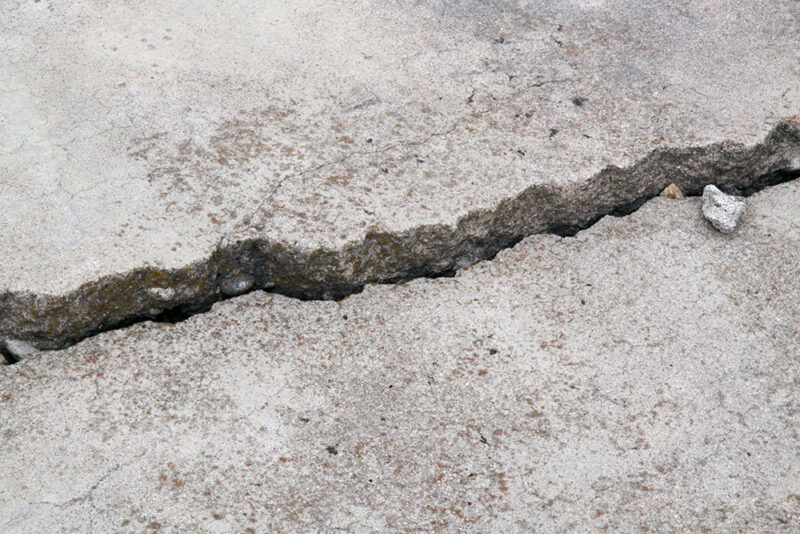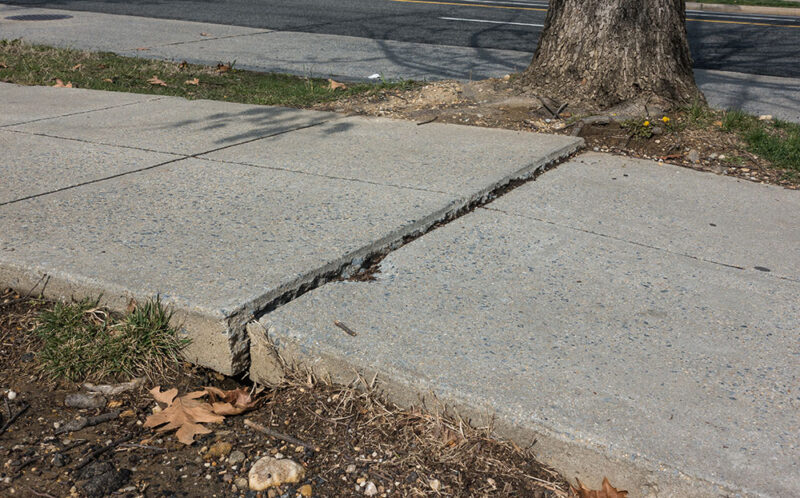Concrete is one of the most durable construction materials in use today, but there are several things that can take a toll on these types of surfaces. Some of them can include but may not be limited to:
- Poor installation.
- Normal wear and tear.
- Exposure to chemicals.
- Extreme temperatures.
If your concrete is starting to look rough around the edges, there’s a good chance it can be fixed. Whether it’s spalling on a concrete slab, scratches on a concrete countertop, or crumbling edges on concrete steps, it can often be restored to its original condition by using the right techniques and repair products.

Warning Signs of Damaged Concrete
Finding damaged concrete isn’t difficult. Just look for cracked or sunken areas on the slab. If you see any of these warning signs, you should contact a professional so you can determine the cause of the problem. If you don’t take care of the issue, it will only get worse as time goes on.
Here are some of the signs that your concrete is damaged:
- Uneven Driveway — Like any other concrete surface, your driveway can get damaged (which can have a number of causes). In many cases, it will lead to uneven areas that can damage cars and cause people to trip.
- Unlevel Steps — Outdoor steps are supported by a concrete base, which can get damaged in the same way as other concrete structures when they’re exposed to weak soil.
- Soil Washout — This can lead to unlevel concrete every single time. Water sources (such as rain or sprinklers) can saturate the soil on your property, which can cause the ground to become weak.
- Concrete Pitting, Flaking, and Staining — Concrete can become discolored and structurally weak for a variety of reasons. In most cases, pitting, flaking, and staining isn’t something you can control. But, it still needs to be fixed.
If you see any of these warning signs, be sure to speak to a professional as soon as possible.

Causes of Concrete Damage
Problems with the soil under a concrete slab are often the root cause of most types of damage. Other causes of concrete damage can also include:
- Drought or dry conditions.
- Invasive tree roots.
- Soil erosion.
- Soil shrinkage, compaction, and settling.
Be sure to speak to a professional for more information.
How to Repair Damaged Concrete
When it comes to concrete repair, it’s always a good idea to hire a professional (even if the damage looks minor). Any damage that is left to go for too long could get worse, which can turn a small issue into a major problem. Repairing damaged concrete can be more cost-effective than doing a replacement. It will also take less time. If it’s done right, it will be less noticeable. A good concrete repair can be just as good, and it will last just as long as the original build. There are times, however, when a total replacement may be necessary. But, it will depend on the extent of the damage.
If you’re looking for one of the best Corpus Christi contractors to help you with repairing a damaged concrete slab, be sure to get in touch with Streem Foundation Repair.
